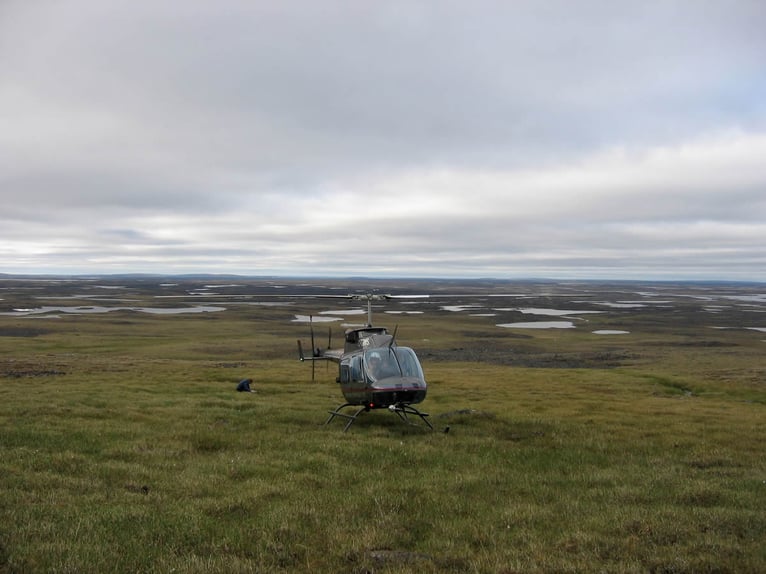 Airborne surveys are used predominantly for exploration of ore minerals, but can also be applied for fossil fuels and geothermal exploration, and in various engineering, land management and mapping projects. The technique measures physical parameters such as: rock density contrasts (gravity gradiometry), electrical conductivity (electromagnetic systems), radioelement concentration (Gamma-spectrometry), and percentage of magnetite (magnetics).
Airborne surveys are used predominantly for exploration of ore minerals, but can also be applied for fossil fuels and geothermal exploration, and in various engineering, land management and mapping projects. The technique measures physical parameters such as: rock density contrasts (gravity gradiometry), electrical conductivity (electromagnetic systems), radioelement concentration (Gamma-spectrometry), and percentage of magnetite (magnetics).
At Ronacher McKenzie Geoscience, we want to ensure that our clients get the best service possible, so we assist our clients with all aspects of airborne surveys – designing, planning, executing, managing, right through to quality control and interpretation.
During a Discovery Call, we’ll ask questions to better understand your project and help with planning your airborne survey.
- What is the objective of the survey – is it for regional mapping, structural interpretation, target detection
- What is the regional/local geology? Is there a preferred direction to the geology? – Does the geology follow a particular direction, are targets associated with particular structures?
- Is there enough contrast in the geophysical properties to make the survey worth doing? Modelling can be performed to see if a target has sufficient contrast with respect to the host geology.
- If targeting is the goal, and assuming there is enough contrast in the geophysical properties between target and host - what is the target size and depth? – Are the targets big enough to be detected? Are the targets near surface or deep?
- What is the terrain in the area of interest? – Should helicopter or fixed-wing platform be used?
Once the scope of the project has been defined, we work with our clients to help make the best decisions on various parameters, to make the survey effective and cost-efficient. These project parameters include:
- Helicopter or fixed wing platforms – besides the terrain, other factors need to be considered - airports, fuel supplies, base of operations – although typically this will be the contractors responsibility to determine these arrangements.
- Type of survey – magnetics, gravity, EM – (time domain, frequency), gamma spectrometry – depends on the objectives –
- regional mapping and structural interpretation – magnetics,
- EM maps the electrical conductivity,
- Gamma-spectrometry – mapping the near surface,
- Gravity – mapping density contrasts
- Survey altitude
- Line direction – fly 90° to the known geology or target structures
- Line spacing – a regional mapping survey can afford to be wider line spacing, but targeting requires closer spacing – try to get at least two lines over a target.
- Tie line spacing direction – orthogonal to line direction typical ratio of 1:5 or 1:10 spacing relative to the flight lines
- EM System requirements –depending on the target, the EM system can be chosen to better resolve the objective, so is the target near surface, or deep, is the host rock conductive or resistive?
Once these parameters have been defined, we assist our clients with creating the RFP document and contacting several service providers to obtain quotes. We’ll review quotes with clients and offer analysis and recommendations if required.
Our consulting services include overseeing the execution of the airborne survey, quality control processes, and the in-depth analysis of the survey data. Our team has the expertise to give value-added interpretation of data based on an integrated approach to geological and geophysical data.
We make sense of your geophysical data by interpreting it from a geological perspective. We can bring this in 3D, conduct inversion modelling where necessary, and perform a structural lineament analysis.
If you’re considering or planning an airborne geophysical survey, set up a Discovery Call with us. We look forward to hearing about your project and discussing how we could help you achieve your objectives.




